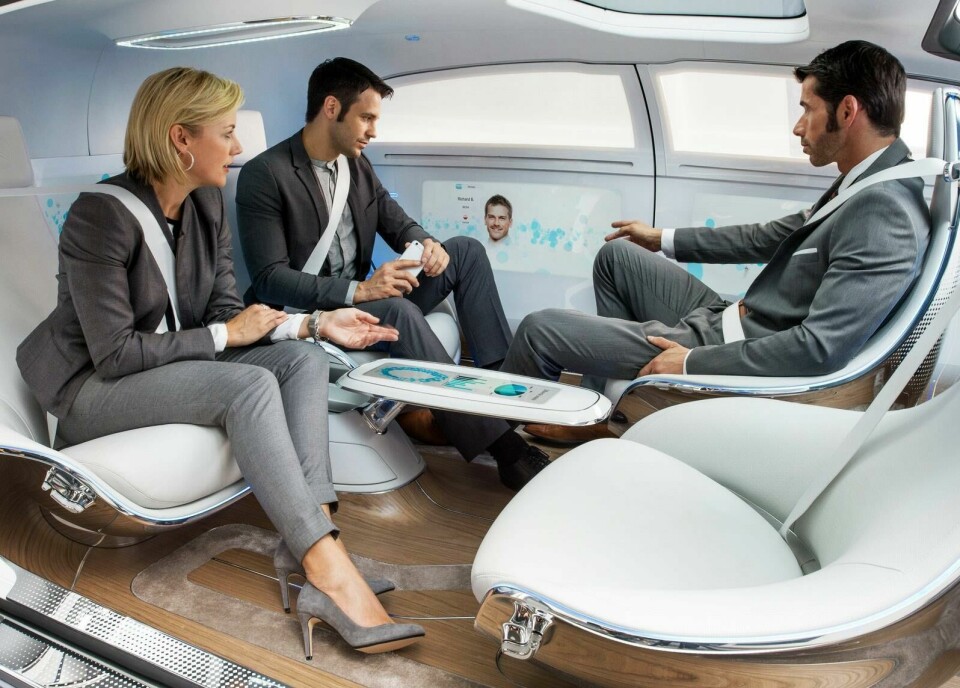
JLR and the Institute of Ideas ask: Are we ready for driverless cars?
Peter Stevens reports from a day of discussions surrounding the industry’s hottest topic: autonomous cars
Earlier this month Jaguar Land Rover, in collaboration with the Institute of Ideas, hosted a debate at which I spoke, titled ‘From Liftshare to driverless pods – what is the future of driving?’ This is a question that many car companies are asking, and one which possibly demonstrates a degree of uncertainty for JLR over how an autonomous vehicle would fit into its model range. Jaguar represents itself as a maker of vehicles giving driving excitement and driving pleasure; Land Rover represents driving freedom and the opportunity to go where others can’t.
Claire Fox, the director of the Institute of Ideas opened the discussion with some context: “The rise of autonomous vehicles raises broader questions about driving in the 21st century. For the 20th century, the car was the ultimate symbol of freedom: from the romanticism of the Beat Generation to Route 66, having control over one’s own mobility remains a powerful cultural hallmark of independence and adulthood.

“For some, today’s car seem the antithesis to that yearning, but others can counter that automated vehicles will be a liberation from the tedium of mostly congested driving. It is also argued that car manufacturers need fundamentally to rethink the car interior as a space for play or relaxation, with phone-connected view technology and vehicle-to-vehicle connection offering significant possibilities for convenience and passenger safety.”
Philosophical challenges
However, we first need to ask why we need autonomous cars. This is certainly a city-centric question. Yet whilst the self-driving car is seen as a solution for congestion and pollution in urban centres, it feels like a quick fix rather than part of a major infrastructure plan. And those who live in remote areas of the countryside have little or no use for a self-driving car.
Philosophical questions also need to be addressed, such as whether to allow a single occupant of a self-driving car to be killed in preference to a group of schoolchildren waiting at a bus stop, and whether this is a dilemma that the code-writers will be happy to take responsibility for. As Facebook founder Mark Zuckerberg recently said of artificial intelligence: “it is very good at recognising patterns of events but very bad at ‘common sense’.”

Philippa Oldham, head of transport and manufacturing, Institute of Mechanical Engineers also expressed her reservations: “Coming from the field of mechanical engineering and a period spent working on the design of Formula 1 engines, I am confident that the engineering, to mass-production standards, of autonomous cars is probably no more than ten years away. However, the moral implications of a software-controlled mechanism are a more complex issue: who takes responsibility not only for the decision-making code, but for its reliability in service, is something that causes me concern.”
And for the designer too there will be many new challenges in developing the three-dimensional interpretation of a totally new transportation culture. “Will there be room for emotional design in this potential future?” asked Dr Wolfgang Epple, JLR’s director of research and technology. “Absolutely. The future should offer tremendous opportunities for those who dare. There will be far more time when the ‘not any more’ driver has the opportunity to savour his environment.”
I believe design will remain an essential element of the product: buying an automobile is still an emotional undertaking. How this will manifest itself with an autonomous automobile is not clear, but perhaps this will demand a new design language. People find little attachment to a taxi or a rental car; will they think of a self-driving car in the same way? What is very clear to me is that neither the ‘brutalist’ qualities that one sees in Audi concept interiors, nor the cold and clinical proposals that have recently come from VW and Bosch, will make the autonomous developments acceptable.
The interior experience
How will the interior of an autonomous car look? I have seen suggestions that it will not need windows, it would be a womb-like cocoon exuding safety and reassurance. I cannot believe that having no idea of where you are or where you are going is acceptable; the delight of travelling by train, aircraft or in the rear seat of someone else’s car is the opportunity to look around and immerse yourself in the journey. Are we all really so desperate to cut ourselves off from reality? I think not.

Austin Williams, associate professor in architecture, XJTLU University, Suzhou, China; director, Future Cities Project; former director, Transport Research Group shared these views: “When thinking about the ‘no windows’ vehicle designs that some manufacturers are considering, it strikes me that this is the consequence of a blind infatuation with the technology. There is often such a reliance on tech that we forget the basics of good design, or see them as secondary or inconsequential.
“The dreadful phrase ‘user experience’ is often adapted from computer gaming, where nerds who have no need for daylight or genuine social interaction content themselves with the ultimate virtual experience. It has become painfully clear that the debate about smart cities has degraded into seeing the metropolis as a series of points or data-sets, rather than remembering that a city is meant to be a vibrant cultural urban centre that is bigger then the sum of its parts.
“We have to be careful that the over-hyping of technology doesn’t blind us (a la no windows) to the real needs and interaction of real people, not ‘users’, ‘consumers’ or any other generic collective noun.”

One often sees autonomous concepts where the front seats can rotate through 180 degrees to produce a ‘social space’; apart from the wasteful use of space and the increase in vehicle weight this causes, are we sure that 50 percent of passengers will be happy travelling facing backward? How will the designers of the future handle this dichotomy?
The auto-valet
It is possible that something I call ‘autonomous-lite’ might be more suitable for contemporary needs. For example, the driver arrives at an inner-city multi-storey car park; gets out of the car; clicks a button on the key; the car drives itself into the car park, finds a space that need only be 200mm wider than itself, and parks. Some time later the driver returns; clicks another button; the car brings itself to the collection point. One only has to look at the scrape marks on the walls, corners and safety barriers in any car park to see the attraction of this, and with the closer spacing of the parked cars more can be accommodated. Even so, the key will need to give complete confidence in its functioning.

A new paradigm
Opinions from other panel members at the JLR debate suggested a degree of scepticism but all were aware that it needs to be discussed in the widest possible arena. A broad spectrum of many mature views will be essential before we accept the premise of autonomous vehicles.
“Does the rise of the driverless vehicle represent an existential challenge for the future automobile, or will it simply provide another choice?” asks Claire Fox. “Could 2020 mark the end of the car as we know it, or will drivers continue to grab hold of the steering wheel? Across the West, public transportation and cycling is soaring compared to car use, whilst the rise of sharing economy apps such as Uber and Liftshare have opened up new possibilities for car-travel. Rather than killing driving, driverless cars may be the only way to get future generations into cars at all.”
These questions and observations should be seen not as a condemnation of the self-driving car but rather an indication of how very different these cars will need to be, in terms of design, materials, HMI and ergonomics. And a much greater understanding is needed of the emotional impact on our behaviour towards, and relationship with, our near environment. In other words, autonomous cars represent a whole new paradigm for designers – and a huge opportunity.




